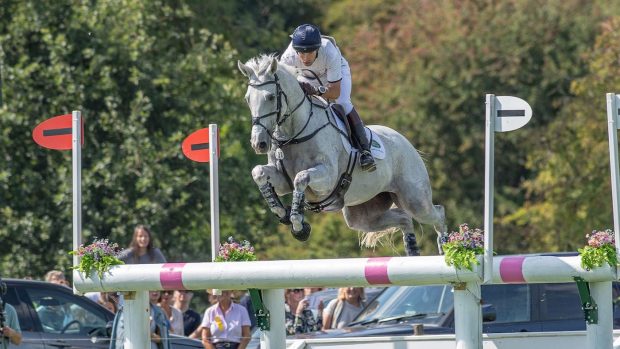After lameness, horses with chronic respiratory problems are probably the biggest bane of their owner’s lives. According to Bruce McGorum of Edinburgh Vet School’s Easter Bush Veterinary Centre owner attitudes and commitment are vital to managing recurrent airway obstruction (RAO).
“We’re trying to move away from the term COPD to avoid confusion with an identically named but unrelated lung condition in humans,” says Bruce. “The preferred labels now are recurrent airway obstruction (RAO) or, quite simply, heaves.”
RAO closely resembles a type of occupational asthma that is well-recognised in humans working in dusty environments. In all cases, horses included, the disease results from inhaling dust, which is contaminated with endotoxin from certain bacterial cell walls, and/or a variety of moulds or fungal spores. For horses, the most common source of all these components is mouldy hay and straw.
“There is no quick fix to the problem of RAO,” Bruce explains. “Treatment with drugs such as bronchodilators to open the airways in the lungs is only partially and temporarily effective, and only really worthwhile as an adjunct to the critically important task of maintaining horses in as dust-free an environment as possible.
“This is where owners can make so much difference to the success and well being of their horses,” says Bruce.
“The best possible solution is to turn your horse out. Many horses, if rugged up properly, can happily live out all the year round, grazing and drainage permitting. But with racehorses and other high-performance horses, this option isn’t possible, so maintaining the stable environment dust free becomes the goal.
“Straw bedding is definitely out. Shavings, paper or rubber matting are the preferred options, with shavings the most common and easiest to use. The essential thing is that the shavings are kept spotlessly clean.
“Deep litter is not permitted as the endotoxin-producing bacteria multiply rapidly in urine and dung-stained shavings, making them just a bad as straw. Use the shavings sparingly and clean them out on a daily basis.
“Diet is also an important consideration. Although it’s easy to spot severely mouldy hay, visual inspection can’t pick up a more mildly affected but equally damaging product. Soaking hay doesn’t adequately reduce exposure to dusts and moulds and also leaches out much of the nutritional value. Hay is therefore ruled out of the diet in favour of low-dust alternatives such as silage, a complete cubed diet or, best of all, haylage.
“In addition to the above, good stable ventilation is essential. Keep the half-door
open at all times and install a vent with baffle in the opposite wall so that there is a constant flow of fresh air. And remember the adjacent environment, too. There’s little point trying to keep one stable in a yard dust-free if all the other horses close by are kept on hay and straw.
“The major limiting factors to success are the practicalities of the regime and the expense involved. But it is a rewarding condition to treat because if you alter the environment sufficiently, animals become both clinically and endoscopically normal within a fairly short space of time. If, however, the condition is neglected, structural lung changes can take place, resulting in permanent loss of optimum function.
“It is well worth stressing the point that ALL horses, not just those suffering from RAO, will reap substantial benefits from living in a dust-free environment. In addition, keeping dust levels low is important for human health, as it will reduce the chances of you and other staff developing dust-induced cough and asthma.”
- This article was originally published in full in the 25 December issue of Horse & Hound. To purchase a back issue (tel: 020 8532 3628).

 Get up to 19 issues FREE
Get up to 19 issues FREE
 UK’s No1 weekly for Horses for Sale
UK’s No1 weekly for Horses for Sale
 Latest results and reports
Latest results and reports
 TO SUBSCRIBE CLICK HERE
TO SUBSCRIBE CLICK HERE




